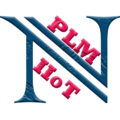Bill of Material (BOM) and its Crucial Role in Product Development and Manufacturing
Introduction:
In the realm of product development and manufacturing, an essential document plays a vital role in ensuring smooth operations, efficient production processes, and successful end products. This document is known as the Bill of Materials (BOM), often referred to as a “recipe” or “wish list” for a product. The BOM is a comprehensive list of resources, components, and assemblies required to construct, repair, or manufacture a product. It forms the backbone of the production process and acts as a critical communication tool among different departments within an organization, from SMEs to large enterprises across the globe.
Understanding the Types of Bill of Materials
There are various types of BOMs used in product development and manufacturing, but two stand out as the most common ones: Engineering BOM (eBOM) and Manufacturing BOM (mBOM).
Engineering Bill of Material (eBOM):
The Engineering BOM is created during the product design phase and is often based on Computer-Aided Design (CAD) or Electronic Design Automation (EDA) tools. This type of BOM details all the items, components, sub-assemblies, and assemblies as designed by the engineering team. It represents the hierarchical relationship between parent and child items, as shown in assembly drawings. Sometimes, multiple eBOMs may be associated with one finished product, capturing different design variations.
Manufacturing Bill of Materials (mBOM):
The Manufacturing BOM comes into play when a company needs to identify all the assemblies and components required to build a finished product. It includes parts that require processing before assembly. The mBOM is shared with integrated company systems like Enterprise Resource Planning (ERP), Material Resource Planning (MRP), and Manufacturing Execution Systems (MES). This type of BOM ensures that the purchasing department can maintain an optimized schedule for ordering components and negotiate the best possible prices from vendors.
Other Types of BOMs:
- Configurable BOM (cBOM): Suitable for industries dealing with highly configurable products, such as work shops, heavy equipment, and industrial machinery.
- Service BOM: Created by engineers during the design phase, the Service BOM provides a comprehensive list of parts, assembly steps, and repair instructions used by technicians during product servicing or onsite installations.
- Sales BOM: Unlike other BOMs, the Sales BOM details a finished product before its assembly during the sales stage. Both the finished product and its components are treated as separate items in the sales order record.
The Importance of Bill of Materials in NPD and Manufacturing
A well-structured and accurate BOM is crucial for various aspects of product development and manufacturing. Here are some key reasons why BOMs are of utmost importance:
- Ensuring Seamless Collaboration: A BOM facilitates seamless collaboration among different departments, including design, procurement, manufacturing, and sales. It acts as a single source of truth, ensuring everyone is on the same page and working towards a unified goal.
- Improving Product Quality: An accurate BOM ensures that the right components are used in the right quantities, reducing the chances of errors, defects, and rework. This ultimately results in elevated product excellence and increased customer contentment.
- Enhancing Efficiency: A well-organized BOM streamlines the production process, enabling faster production cycles and optimized inventory management. It helps in better resource allocation and cost control.
- Supporting Supply Chain Management: The BOM serves as a valuable tool for supply chain management. It aids in planning material procurement, managing inventory levels, and ensuring timely delivery of components.
- Facilitating Product Variants: In industries where product customization is common, such as automotive or electronics, BOMs help in managing different product variants and configurations efficiently.
Conclusion:
In conclusion, the Bill of Materials (BOM) plays a critical role in product development and manufacturing. It acts as a comprehensive guide, specifying all the necessary resources, components, and assemblies required to build a product. From SMEs to large enterprises, BOMs are indispensable tools that ensure seamless collaboration among departments, improve product quality, enhance efficiency, support supply chain management, and facilitate product customization. To stay ahead in the competitive market and optimize manufacturing processes, organizations should prioritize the accuracy and effectiveness of their BOMs.
If you’re seeking guidance on implementing Automated Bills of Materials for your organization, do not hesitate to get in touch with Neel SMARTEC, your expert content creator in this field. We are here to help you unlock the full potential of your product development and manufacturing processes.


